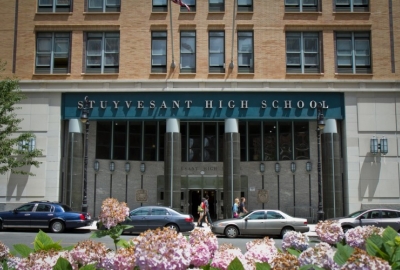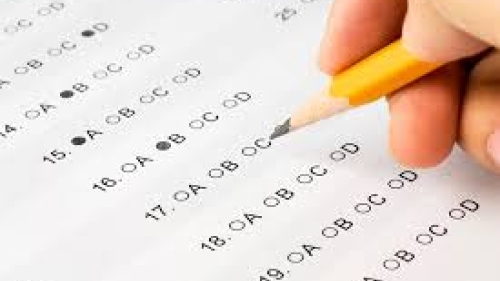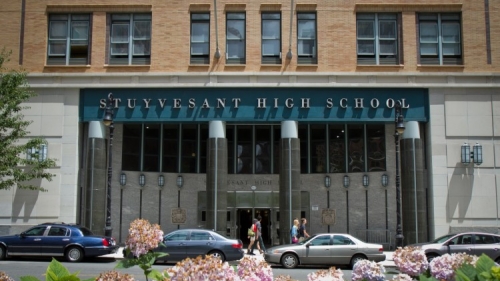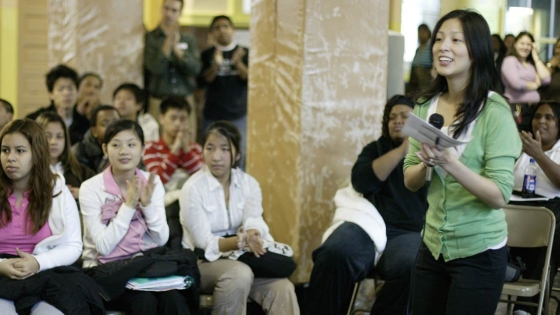
By Norm Fruchter
In 1973, the Vincent Astor Foundation-funded New York City to initiate programs for gifted students in 40 Manhattan and Brooklyn schools. In 1983, after I was elected to the Community School Board in Brooklyn’s District 15, I learned that our district had developed Astor program gifted tracks—one class to each grade—in three elementary schools. These gifted programs began in kindergarten, with entry based on early childhood aptitude tests administered to pre-kindergarten applicants. An administrator who helped start our district’s gifted program told me that, in his view, the Astor program was designed to keep the middle class in the city’s public school system.
I soon realized that middle class meant white students and their parents. In 1983 District 15’s 20,000 student population was predominantly Latinx and White, with smaller segments of Black and Asian. Yet enrollment in the district’s three gifted programs was overwhelmingly White. Although the district’s zoned elementary schools enrolled their students from contiguous neighborhoods, the three gifted programs recruited students from the entire district. Thus, the gifted program’s students were bussed from their home neighborhoods to the three elementary schools housing the gifted tracks. Essentially our district’s gifted programs represented an early version of choice at the elementary school level.
The first issue I faced as a new school board member was a series of alleged abuses of the gifted program’s entry testing. Our district’s psychologists administered the required tests, but parents could opt for private testing if they chose to pay the fee. When the district discovered anomalies in the scores of some of the students privately tested, the school board decided that all testing for gifted program entry would be conducted by the district’s own psychologists.

Soon after the new testing policy was implemented, the district learned that parents were having their children pre-tested and prepped by private psychologists, often using the same tests we were administering. Though board members agreed that such practices violated the program’s entry criteria—selection based on demonstrated aptitude rather than prior preparation—we were stumped about how to prevent these practices.
Worse, the entry testing abuses masked a deeper problem, the validity of the testing itself. Since the inception of the Astor program, early childhood experts had challenged the validity not only of the entry tests, but the reliability of any assessment of four-year-olds developed to determine the nature and extent of their giftedness.
Our testing instruments, critics argued, were not only age-inappropriate but also inevitably structured by cultural bias and familial advantage. What we were actually assessing, our detractors claimed, was young children’s level of familiarity with the reigning cultural milieu in which test-makers and applicants alike were immersed.
Although child prodigies had long established an enviable educational legacy—consider the young Mozart or the young Thelonius Monk—the nature of their giftedness varied enormously. Some child prodigies demonstrated highly developed verbal and memory skills; others showed striking facility with numbers and calculation. While some evinced highly refined art, music and other aesthetic abilities, still others showed very advanced kinesthetic skills. Skeptics argued that because our district tested only a narrow range of primarily verbal skills, we were privileging a sliver of the broad range of capacities associated with giftedness.
These objections, combined with the roiling tensions generated by an overwhelmingly White group of children bussed to and sequestered into separate tracks in predominantly Black and Latinx elementary schools, led our school board to propose a revision of our entry policy. Rather than starting the gifted program in kindergarten and testing four-year-olds in the prior year, we suggested beginning the gifted program in first grade. Rather than testing, we proposed entry criteria based on observation of kindergarten students by our district’s kindergarten teachers, who would nominate student applicants based on their demonstrated capacities. Our new entry proposal also called for the development of a more multifaceted definition of giftedness.
The school board disseminated our proposal district-wide, scheduled a special board meeting to discuss it, and invited the entire district parent community. The resulting attendees were almost entirely White “gifted parents,” as they referred to themselves. These parents uniformly denounced our proposed policies as destructive of gifted students’ needs. Heated arguments dismissed entry selection based on kindergarten teacher judgment as hopelessly subjective, as opposed to the supposedly objective scientific evidence our testing instruments provided. First grade entry was criticized as far too late to begin the task of shaping students’ giftedness, and worse, would require many students to endure the privations of locally zoned kindergartens for an entire year. Those board members identified as advocates for the new policy, myself included, were attacked as social engineers driven by misplaced egalitarianism, and blind to the necessity to separate and separately provide for the educational needs of gifted children.
The few parents of color in attendance tried to argue for a program more inclusive of the racial/ethnic and cultural diversity of the district, but they were angrily shouted down. “We won’t let you gut our gifted program,” one parent shouted. “We created it, we fought for it, and we’re never going back to our neighborhood school.”
After that rancorous meeting, several school board members reconsidered their support for the new entry policy, and it was voted down at a subsequent board meeting. That episode was the first time I considered how much more effectively our district might meet the educational needs of its majority Black and Latinx students if we could focus on developing all our students’ capacities, rather than expending so much energy and resources on building enclaves for supposedly gifted White students.
Other NYC districts offering gifted programs encountered similar tensions, and some actually exacerbated them. A 1996 study by the New York City chapter of ACORN (the Association of Community Organizations for Reform Now), using paired racial teams patterned after a fair housing testing method, found that several community school districts offering gifted programs provided false information to prevent Black and Latinx parents from applying to the programs for their children, while facilitating applications from White parents. A second ACORN study found that several overwhelmingly white gifted programs steered students into the school system’s highly selective and predominantly White strata of sought-after middle and high schools.
Much has changed in NYC schools’ efforts to meet the needs of gifted students across the past few decades. Most community school districts currently offer gifted programs within almost 90 district-run elementary schools. The school system also provides five K-8 grade comprehensive gifted and talented schools. Programs in district schools prioritize district residents, but the citywide gifted schools enroll students without regard to where they reside.
Yet gifted program entry is still governed by testing. Entry tests include a non-verbal pattern completion, shape recognition and spatial visualization assessment, and a verbal reasoning and comprehension exam. Applicants to district programs must achieve a combined score of 90% on the two entry tests, and applicants to citywide programs must score at least 97% on those same tests to be eligible to apply.
Though both assessments have been reviewed for reliability and absence of bias, they still assess only a limited range of the skills, aptitudes and capacities that comprise the panoply of giftedness. Though both the district and citywide programs are consistently labeled as gifted and talented (G&T), no dimensions of aesthetic, artistic, interpretive, and kinesthetic abilities are assessed.
Moreover, the five citywide G&T schools and the almost 90 district-level G&T programs are overwhelmingly White. According to a Chalkbeat posting by Christina Veiga on June 1, 2018, the G&T programs are estimated to be at least 70 percent White and Asian. The four districts with no G&T programs, two in the Bronx and two in Brooklyn, are among the school system’s poorest and most hyper-segregated districts.
In 10 of the city’s 32 districts, in 2018, only a few students scored in the 97th percentile or above on the G&T test, the level necessary for citywide program application. Pass rates vary widely—45 percent of all test-takers in Manhattan’s District 2 qualified for a city or district program, but only 9 percent of those in the Bronx’s District 12 did. In the early 1980’s, District 15’s G&T program was overwhelmingly White, as were most of local school districts’ gifted programs.
But in the interim decades, district G&T programs have seen a sharp increase in Asian student populations. Asian student enrollment in the city’s highly selective high schools, and particularly in its test-driven school sector, has also accelerated. Though Asian-American students comprise 16% of the city's public school population, nearly 75% of Stuyvesant students, 66 % percent of Bronx Science students, and 60% of Brooklyn Tech students are of Asian descent. Though more than 70% of the city’s public school students are Black and Latino, those students comprise less than 11 percent of all the students in the specialized test-entry high schools.
Perhaps the most problematic result of both citywide and school-level G&T programs is their pipeline effect. The 90 district-level programs feed into a small sub-set of selective middle schools, most of them majority White and Asian, which feed into a small subset of selective high schools, both the specialized schools (eight selective high schools that use the Specialized High School Admissions Test, or SHSAT, for admission) and a larger tier of highly selective high schools. Both the specialized schools and the larger selective high school tier are predominantly White and Asian.
Deputy Chancellor Josh Wallack, speaking at a District 2 community meeting in November, 2018, about New York City Mayor Bill de Blasio’s plan to revise the testing criteria for the school system’s specialized high schools, indicated that more than 50% of the students admitted to those schools come from only 4% of the system’s middle schools. An analysis by the New School’s Center for New York City Affairs found that half of all top-scoring students on state tests came from just 45 middle schools, while 60 percent of students at the specialized high schools came from those same 45 schools.

So what started in the early 1970s as a modest effort to provide gifted education has become a highly selective citywide stream that recruits predominantly White and Asian students into separate classes beginning in kindergarten in almost 100 gifted programs and schools throughout the city. The graduates of those elementary school gifted programs move into highly selective, predominantly White and Asian middle schools, which funnel their students into the city’s top tier, highly selective predominantly White and Asian high schools, which ultimately send many of their graduates to the nation’s top colleges.
Meanwhile, the great majority of the city’s Black and Latinx students attend elementary, middle, and high schools that are severely under-resourced and under-subscribed, from which their students graduate, if they graduate, into precarious employment in the city’s service sectors. Those relatively few graduates headed to higher education often enroll in CUNY colleges where too many spend their federal and state opportunity grants, and their college careers, mired in remedial courses.
The cost of this systemic exercise in separate and unequal education is not trivial. According to the NYC Department of Education (DOE), the average city teacher salary was $73,362 in 2018. Assuming ten teachers in each of the 90 gifted programs (one teacher to each K-5 grade, three subject-area specialists in Science, Social Studies, and Art or Music, and one program coordinator), teacher costs alone might approach $70 million. Add $5 million per school for the five citywide gifted program schools and the cost of this separate and segregated stream approaches $100 million.
But the costs of the school system’s tier of selective high schools beyond the eight specialized test-driven schools is much higher. The top twenty-five city high schools that graduate more than 90% of their students enroll predominantly White and Asian students. At approximately $25 million per high school, the cost of this privileged and hyper-segregated selective high school tier probably approaches $1 billion annually.
By the time city students reach high school, this race-based resource and opportunity disparity has structured, and far too often limited, not only their academic capacities but also what they’ll accomplish in the future. Research has shown that students attending financially stable high schools are more likely to access Advanced Placement and college preparation courses, and to have acquired the skills to succeed in those courses.
Add in increased access to SAT and ACT prep courses, private tutors, and the ability (and time) to pursue expensive extracurricular activities, and the already sizeable gap between wealthy students and their less economically advantaged peers grows even wider. This disparity affects not only who goes to college but also the types of schools students from different backgrounds attend.
A 2015 analysis from the Brookings Institution found that Black students were just 4 percent of those enrolled at top-tier U.S. colleges, but 26 percent of students at the bottom tier of colleges. A 2017 New York Times analysis found that even with race-conscious admissions policies in place, Black and Hispanic students are actually less represented at America’s top colleges now than they were 35 years ago.
If we want the currently hyper-segregated New York City school system to significantly reduce, if not tear down, this race-based opportunity barrier and effectively educate the 70% of our school system’s Black and Latino students, what should we do?
Continuing to spend perhaps a billion dollars on a segregated stream of gifted and selective programs primarily serving White and Asian students, from kindergarten through high school, will not disrupt our failure to effectively serve the majority of the school system’s students. But do we know what constitutes effective education for those students?
We now have increasingly effective data-driven analyses designed to identify all our students’ academic, socio-emotional, and economic needs. We still struggle, however, to deploy an equitable diversity of interventions and supports to effectively meet those needs.
I have been much influenced by the studies of effective education provided to Black students in the segregated post-bellum south, embedded in the pioneering research of James Anderson, Vanessa Siddle Walker, and other historians. In Their Highest Potential, in The Lost Education of Horace Tate, and in numerous other articles, Siddle Walker excavates and documents the commitment of Black principals and teachers in pre-Brown era rural southern segregated schools to challenge poor Black students to reach their intellectual and academic potential.
Walker’s work demonstrates how Black principals and teachers struggled to effectively serve their students in schools resource-starved by white supremacist school boards. Black rural communities, already unfairly taxed to support grossly inadequate roads, water and sewer lines and other public provisions, endured double taxation to build and heat often makeshift schools and provide the basic textbooks and supplies for their students.
Paid meager salaries and often lodging in the homes of the communities they served, educators in those schools fervently believed they were preparing the future leaders of the race, and that their effective education would lead to eventual Black liberation. Walker documents how principals and teachers combined high academic standards and rigorously challenging classrooms with an unrelenting focus on loving and nurturing their students while relentlessly preparing them to develop and hone their academic capacities.
Those schools are long gone—the perhaps unintended victims, along with their Black administrators and teachers, of the integration of southern schools. Currently, in most U.S. school systems, not just in the south, the vast majority of our administrator and teacher cohorts are White. How might we mount a national effort to inspire, recruit, support, train, certify and tenure a huge cohort of teachers of color as committed to helping students of color reach their highest academic potentials as the protagonists in Siddle Walker’s histories were?

